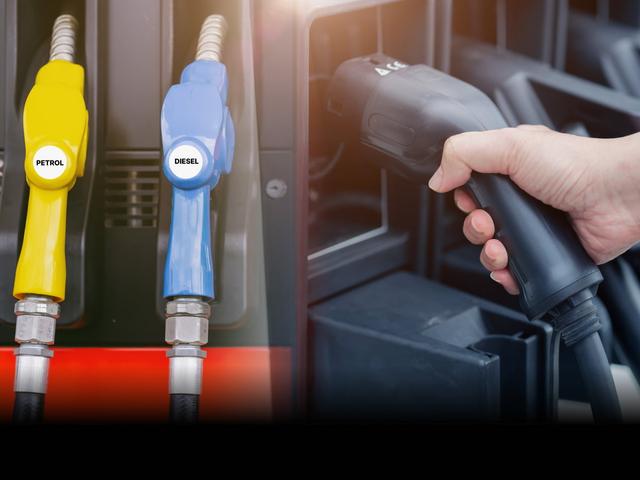Riding a two-wheeler can be an exhilarating experience for some. For others, it’s simply a means to get to point B. Regardless of which camp you fall in, wearing a helmet is the bare minimum protection you need to afford yourself. Especially in a country as crowded and with as much traffic as ours, it’s critical that riders should strap up. The simple fact is that while you might have exceptional control over your vehicle, you have no control over the behaviour of other vehicles around you.
In a bid to curb helmetless riding and other traffic violations in the country, the Motor Vehicles Act of 1988 was amended in 2019, resulting in steeper fines for breaking the law. The fine for riding without a helmet varies across the country, and our guide to the challans issued for the same will go over the implications of flouting rules.
Become a part of the official CARS24 auto community; CLUTCH, where we host lively auto discussions, updates, and more.
State-wise challan rates for not wearing a helmet
Until 2019, the Motor Vehicle Act of 1988 stipulated that a fine of ₹100 would be issued to any rider being caught without a helmet. While not a hefty sum, the fine was meant to act as a deterrent for irresponsible riding. However, an ever-rising number of cases of helmetless riders was being noticed, among other traffic rules violations, which prompted the government to bring forward an amendment to the Motor Vehicle Act in 2019.
Post the amendment, the fine for riding without a helmet rose tenfold to ₹1,000. It should be noted here that every state has the power to set their own challan amounts. Additionally, certain states even gave their respective traffic police units the authority to suspend the violating rider’s driving licence for up to three months. A provision was also added that every helmet should have a 20-25mm thickness with high quality foam, in addition to being ISI certified.
| State | Fine |
| Andhra Pradesh | ₹1,000 and/or suspension of licence for up to 3 months |
| Delhi | ₹1,000 and/or suspension of licence for up to 3 months |
| Haryana | ₹1,000 |
| Karnataka | ₹1,000 and/or suspension of licence for up to 3 months |
| Maharashtra | ₹1,000 and/or suspension of licence for up to 3 months |
| Odisha | ₹1,000 |
| Punjab | ₹1,000 and/or suspension of licence for up to 3 months |
| Telangana | ₹200 |
| Uttar Pradesh | ₹600 |
| West Bengal | ₹1,000 and/or suspension of licence for up to 3 months |
How to pay your challan
If you have been fined for riding a two-wheeler without a helmet (or any other violation), it’s recommended that you clear the challan as soon as possible.
There are two ways you can pay the fine (online and offline). The quicker method is to complete the transaction online. The steps involved are as follows:
1) Visit the Parivahan e-challan webpage

2) Click on the ‘Challan’ or ‘Violation Payment’ button.
3) In the provided space, enter the ‘Challan Number’ or ‘Vehicle Number’.

4) Enter the Captcha code.
5) Check all the details of the Challan on the next page and click continue.
6) Select the preferred payment method to complete the transaction. The options include credit card, debit card, netbanking, UPI, and PayTM.

Once the payment is complete, you will receive a notification along with a receipt on your phone. You can download and print the receipt for future reference.
If an online payment of the challan is not an option, you can also physically visit the nearest traffic police station in your city to pay the fine in person. Once you’ve provided the details of your challan, had it verified, and completed the payment for it, you will receive a receipt that you can keep for future reference.
Why should you wear a helmet?
The statistics make for grave reading: in 2022, the number of reported two-wheeler deaths was nearly 75,000. That figure accounted for 44% of all the fatalities on Indian roads during that year.
A helmet is one of the most crucial bits of protection you can give yourself while riding a two-wheeler. Unlike a car, there is no barrier between you and your surrounding environment. Naturally, you’re a lot more exposed and vulnerable on a motorcycle in the event of an accident. This is why it’s crucial to protect the most valuable body parts from anything that can cause injury on the move.
This is where the helmet comes in. Needless to say, the human head needs to be protected at any cost from external factors, and modern helmets do an excellent job of providing that protection. To make it abundantly clear, helmets don’t guarantee that you will be able to walk away from an accident. They simply reduce the likelihood of an injury to a great degree.
What kind of helmets are allowed in India?
Section 129 of the Motor Vehicles Act of 1988 pertains to the mandatory wearing of protective headgear while riding a motorcycle of any class or description in a public place. The provision also mandates the use of securely-fastened headgear that can reasonably be expected to offer a certain degree of protection in the event of an accident.
Today, there are numerous manufacturers selling a variety of helmets in India. These helmets could cost as little as ₹500, while some could even stretch to more than ₹1 lakh. That said, what kind of helmets are mandated by the government?
The government of India, in collaboration with the Bureau of Indian Standards (BIS), has issued a notice for helmet manufacturers to follow a set of norms to manufacture helmets.
- The weight of the helmet must not exceed 1.2 kg.
- The helmet must be 20-25mm thick and should be manufactured using high-quality foam.
- The Ministry of Road Transport and Highways has made it mandatory for helmets to get an ISI stamp.
- A clear visor needs to be in place to not obstruct vision.
- Helmets are also required to pass BIS tests before being sold. These include absorption tests to check how the helmet performs in varying weather conditions.
Choosing the right helmet
Having a set of norms for helmet construction in place is definitely a good start. However, the next step of actually choosing a helmet that’s right for you is crucial. Choosing the right motorcycle helmet impacts not only your comfort, but also your safety.
Every rider should keep the following things in mind while picking out a helmet:
- The material used in the helmet’s construction directly affects its weight. Here, it’s not as simple a relationship as the heavier the helmet is, the safer it will be. Composite materials like carbon fibre and Kevlar offer the advantage of being lightweight, which can be crucial to reduce neck fatigue on longer rides. A more affordable option would be to get a helmet made from ABS or polycarbonate. They’re slightly heavier, but offer a good amount of structural integrity to protect you in the case of an accident.
- Needless to say, the key function of a helmet is to reduce the risk of head injury during an impact. Materials like carbon fibre, Kevlar and advanced thermoset resins are known for their superior impact resistance abilities.
- Considering that a helmet will be in use for at least 2-3 years, it’s important to consider how different materials react to exposure to elements like UV rays, rain, and extreme temperatures. Composite fibres and advanced thermoset resins tend to offer better durability and resistance to environmental degradation.
- It’s also crucial that a new helmet should be the right size. A recommended test is to make it sit squarely on your head, and if it doesn’t move freely when you shake your head, then it’s the right size.
- Getting a helmet with proper ventilation ducts for airflow, removable and washable liners, and noise reduction designs can significantly improve your riding experiences.
- Remember that a helmet is designed to absorb and disperse the impact, rather than transfer the impact forces to the head of the rider. If the helmet breaks or cracks after a major impact, it is doing its job, as it is designed to do so.
Conclusion
Helmets are a critical component while riding a motorcycle, and its utility can’t be overestimated. The amended Motor Vehicles Act of 1988, and the associated increase in fines for riding without a helmet are definitely a step in the right direction.
A greater emphasis also needs to be laid on purchasing the right kind of helmet. This could, quite literally, be the difference between life and death in certain cases. What’s heartening to see is that a number of renowned helmet manufacturers are now selling their helmets in India, giving millions of riders access to better protection.
FAQs
Q. What happens if we ride without a helmet?
Riding without a helmet in India is a punishable offence, with a fine and/or a suspension of your licence being applicable.
Q. How to avoid helmet challan?
The best way to avoid a challan for riding without a helmet is to remember to always wear a helmet while riding a two-wheeler.
Q. What is the fine for no helmet in Delhi?
The fine for riding without a helmet in Delhi is ₹1,000 and/or suspension of licence for up to 3 months.
Q. Is it compulsory for the rider and pillion to wear a helmet in Delhi?
Yes, it is compulsory by law for a rider and pillion to wear a helmet on a two-wheeler in Delhi.
Q. Which helmet is not allowed?
Helmets without an ISI stamp are illegal in India.
Q. Which helmet is legal?
All helmets in India need to have an ISI stamp to be declared legal in India. Using a non ISI-certified helmet while riding will also incur the same fine as not wearing a helmet.
Q. What is the ISI standard for helmets?
The ISI (now Bureau of Indian Standards, or BIS) is a government-approved testing and certification organisation in India.
Q. What is the challan for riding without a helmet in Gurgaon?
The fine for riding a two-wheeler without a helmet in Gurgaon is ₹1,000 for the first and any subsequent offences. The fine of ₹1,000 is also applicable to a pillion rider without a helmet.
Q. What is the challan for riding without a helmet in West Bengal?
The fine for riding a two-wheeler without a helmet in West Bengal is ₹1,000 and/or suspension of licence for up to 3 months. The ₹1,000 fine is also applicable to a pillion rider without a helmet.
Q. What is the challan for riding without a helmet in Odisha?
The fine for riding a two-wheeler without a helmet in Odisha is ₹1,000 for the first and any subsequent offences. The fine of ₹1,000 is also applicable to a pillion rider without a helmet.



-(1).jpg&w=3840&q=50)
-(1).jpg&w=750&q=50)









.webp&w=828&q=75)



















.jpg&w=640&q=75)



